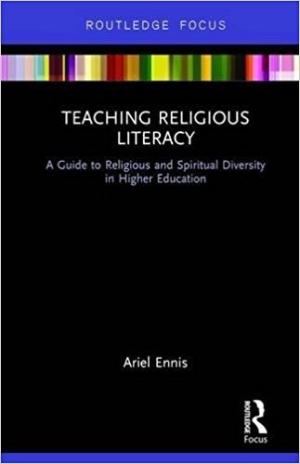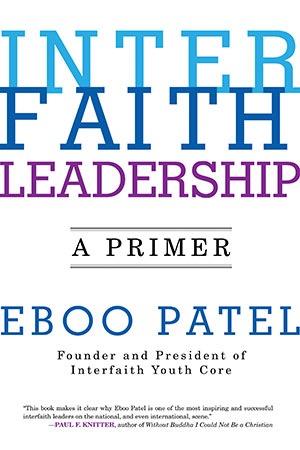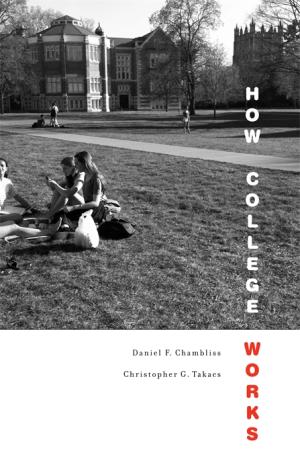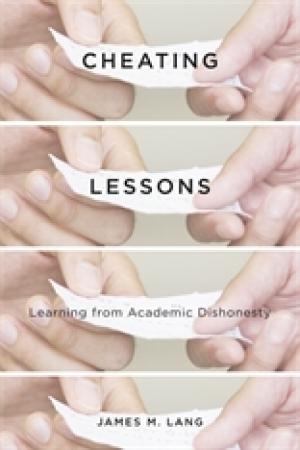Resources by Martha J. Reineke

Ariel Ennis, Assistant Director and Senior Multifaith Educator at the Of Many Institute for Multifaith Leadership in the Office of Global Spiritual Life at New York University, has authored an important contribution to a burgeoning literature on campus-based interfaith and interreligious outreach. Noting that diversity and inclusion initiatives on American campuses frequently address race, sexuality, and gender while ignoring religious identity, Ennis reports on efforts at NYU to create a center to support spiritual life. Special attention is given to the development of a “Faith Zone” curriculum that trains leaders for enhanced multifaith encounters. Ennis analyzes a variety of extant approaches to cross-cultural religious and spiritual experiences, looking at intended outcomes of different programs. Focusing on the concept of “religious literacy,” he describes a framework for the NYU workshops on spiritual diversity that supports religious literacy initiatives. Included in the book is the Faith Zone curriculum and rubrics drawn from the AACU (Association of American Colleges and Universities) VALUE rubrics that are used for post-workshop outcomes assessment. He shares data from these assessments in order to demonstrate the impact on campus of the religious literacy curriculum. The book closes with the author’s reflections on how Faith Zone workshops could be offered on different types of campuses (public/private, religious/secular) and with his recommendations for successfully meeting challenges emerging from the workshops. Campus religious literacy initiatives that Ennis advocates embrace the question: Can we teach people to have more productive conversations about religion and spirituality in diverse settings? Using the definition of religious literacy developed by Dianne Moore of the Religious Literacy Project at Harvard Divinity School, Ennis answers this question affirmatively, setting four outcomes for the interfaith curriculum. Workshops will (1) enhance participants’ knowledge of historic and contemporary interconnections of religion with cultural, political, and social life; (2) embrace an ecumenical orientation that offers participants firsthand experience in exploring religio-cultural boundaries; (3) promote self-awareness about the intersections of participants' religio-spiritual identities with larger social forces; and (4) encourage participants' commitment to apply their new found religious literacy through practical projects that bridge intercultural divides. In contrast to Eboo Patel’s portrait of a fraught relationship between interfaith outreach and religious studies programs (https://www.wabashcenter.wabash.edu/scholarship/interfaith-leadership-a-primer/), Ennis’ book points to positive implications for partnerships on campus between religious studies programs and interfaith outreach. Similarities between Faith Zone outcomes and learning outcomes/assessment of the religion major on many campuses suggest productive cross-fertilization. Students could sustain the long-term impact of the workshop outcomes, adding depth and breadth, through coursework in religious studies grounded in similar learning outcomes. In complementary fashion, religious studies majors could apply learning in the major outside the classroom, enhancing their resumes, through interfaith internships: as graduates of Faith Zone training, they could lead workshops on religious literacy and develop and lead associated campus programming.

To date, one thousand colleges and universities have engaged the Interfaith Youth Core (IFYC) to catalyze interfaith cooperation, educate interfaith leaders, and build knowledge of faith traditions. Authored by the founder of IFYC, Interfaith Leadership contributes to a key IFYC goal: to train seven thousand interfaith leaders by 2020. Sharing his journey to interfaith leadership (Chapter 1), Patel discusses his theory of interfaith understanding (Chapters 2-3), shares his leadership vision (Chapter 4), and identifies leaders’ knowledge, skills, and personal qualities (Chapters 5-7). “Inter” in “interfaith” references “interaction between people who orient around religion differently”; “faith” stands for “how people relate to their religious and ethical traditions.” With the term interfaith, Patel highlights reciprocal influences: interactions with others impact how we relate to “our” religious and ethical traditions as well as to “theirs.” Interfaith leaders guide persons across a “landscape of religious diversity” toward “interfaith cooperation.” Can religious studies programs play a role in campus interfaith leadership training? Patel’s understanding of religious studies is informed by Wilfred Cantwell Smith. As Patel understands Smith, the academic study of religion errs because it looks at “systems” divorced from religious practice. For Patel, “religious system” means faith viewed through a religious studies lens. By contrast, interfaith explorations engage personal practices. Patel identifies two potential models of interfaith leadership: Stephen Prothero and Karen Armstrong. While Prothero focuses on systems (doctrines, texts, and rituals), neglecting the diversity and specificity of lived faith, Armstrong attends to “human-heartedness,” generalizing about spiritual traditions in ways that make these traditions unrecognizable to their adherents. Interfaith leaders, by contrast, support embedded dialogue. Patel illustrates: when the lone Muslim student in a world religions class declares he has never before heard the terms “Shia” and “Sunni,” his professor’s “abstract” approach to Islam is shown irrelevant to other students’ who comprehend “real world” Muslim faith. Eschewing “deficits, problems, and ugliness,” interfaith perspectives “appreciate” the “beautiful, life-giving, and admirable” in religion, building relationships through story-telling. For example, Patel attributes changes in the US between 1928 and 1955 in attitudes about Jews to the NCCJ (originally the National Conference of Christians and Jews. It currently refers to the National Conference for Community and Justice), an interfaith entity, not to the scholarly study of anti-Semitism. Patel also highlights a case study. Doctors trained in Western medicine identify symptoms of epilepsy in a Hmong child. Her parents, believing she is becoming a shaman, do not comply with treatment plans. A seizure puts the child in a vegetative state. Patel ponders whether an “appreciative understanding” of Hmong faith by the doctors could have led to a different outcome. IFYC does valuable work on campuses, promoting conversations about religion that make it safer for students of diverse traditions to express faith without fear. On some campuses, religious studies departments have been included in IFYC initiatives. However, participants in campus IFYC initiatives whose knowledge of the academic study of religion is drawn only from Interfaith Leadership will benefit from outreach by religious studies faculty. We can foster an informed understanding of our field as a vital resource for students seeking the knowledge, skills, and personal qualities needed by leaders in a religiously diverse world.

College students respond to my enthusiasm for old-fashioned dorms − long hallways, shared rooms, communal bathrooms − with the same eye-rolling disdain I once brought to my mother’s valorization of a three-mile walk to school. So when I heard that authors Chambliss and Takacs extol dorm life in How College Works, I was curious. Would they affirm other staples of college life from a bygone era? Book in hand, I discovered that the authors’ massive database, compiled by mining Hamilton College resources (including graduating student surveys, one thousand student papers collected over five years, and campus focus groups) and following a hundred Hamilton College students from their first year to ten years past graduation, supports research findings that confirm the value of several longstanding practices at liberal arts colleges. Although the authors acknowledge that Hamilton College is not representative of American higher education (it ranks fifteenth on US News & World Report’s list of national liberal arts colleges), they suggest that their exclusive focus on Hamilton has enabled them to uncover, beneath the kinds of statistical correlations that both define and constrain large-scale studies, experiences crucial to a good college education anywhere. I agree. On my reading, their findings and recommendations (evidence-based, resource neutral, and free of red tape) are relevant for schools with profiles far different than Hamilton’s. Although the authors do advocate traditional dorms because they correlate with enhanced student engagement, most of their recommendations focus on the faculty. (1)Put your best teachers in your first-year classes. First-year students tend to choose their courses based on their time and location, not their subject matter. Students follow a compelling professor into a second or third course, often becoming de facto majors before they become declared majors. Because students perceive that a professor is the discipline she teaches, students dismiss an entire field after one bad course. (2)Frontload writing-intensive classes: students experience the biggest gains during their first two years, and the weakest students gain the most. (3) Engage students outside the classroom. Graduating seniors report that dinner at a professor’s home had a profound impact. Crunching the numbers from two thousand senior surveys and controlling for GPA, major, gender, race, and so forth, the authors were startled to discover that students who were a guest in a professor’s home even once have an 11 percent higher college satisfaction score than students who were never a guest. (4) Don’t equate college success only with assessable skills. Yes, alumni do comment on the difference that their writing, speaking, and critical thinking skills make in the workplace. But alumni who are highly satisfied with their college experience also report “confidence” and “relationships” as key outcomes. Alumni repeatedly attest to a sense of efficacy they attribute to four years of taking on and successfully meeting challenges, and they strongly affirm not only friendships forged in college but also their membership in a community that, over four years, shaped their identities and their values. Evidence, not nostalgia, supports the authors’ case that three factors − skills, confidence, and relationships − comprise an index of satisfaction that shows how college works, now as in the past.

I did not want to read this book. Having perused a number of books on the subject in recent years, I was suffering from plagiarism fatigue. However, when the head of our center for teaching lent me Cheating Lessons, promising me that it contained new insights and would be good airport reading during an upcoming trip, I acquiesced. I soon discovered that Cheating Lessons is aptly named. Author James Lang draws on case studies, but not primarily to teach his readers about why students plagiarize or commit other academic ethics infractions. Rather, Lang invites his readers to treat each case as a distinct lesson in how students learn. Focusing on contextual rather than dispositional factors linked to cheating and drawing on a body of empirical research, Lang explores powerful pedagogies that come into view in the wake of learning failures to which his case studies attest. Scrutinizing the Olympics of Ancient Greece, civil service tests in China’s dynastic history, and Atlanta’s No Child Left Behind testing scandal, among other examples, Lang establishes that high-stakes testing settings as well as those that focus on performance rather than process offer students only an extrinsic motivation to learn. Most significantly, these environments are highly conducive to cheating. Juxtaposed with these cases are chapters that describe cheating-resistant learning environments. Lang draws his examples from interviews, observations, and teaching materials shared with him by award-winning college and university teachers. These teachers serve as our guides for exploring contexts that promote learning through mastery rather than performance, feature low-stakes assessment, activate students’ intrinsic motivation to learn, and support learners’ self-efficacy. Lang excels at extracting from his data examples and vignettes that draw readers into the classrooms of these teacher guides. There we observe how they promote student engagement by forging links between course questions and questions that students bring to the course. Particularly insightful are Lang’s suggestions for addressing a problem that may especially beset those of us who teach required subjects: when confronted with students’ indifference to a question or topic that captivates us, what learning strategies can we employ that will elicit from students a strong desire to grasp hold of the learning challenges we pose to them? Teachers highlighted by Lang offer creative and inspiring examples of assessment practices that bolster students’ intrinsic motivation to learn and enhance their self-efficacy (for example, a literature course in which students work with literary classics and then teach them to residents of a juvenile correctional center). Lang’s account of powerful pedagogical practices, rich with possibilities for enhancing learning in the religious studies classroom, makes Cheating Lessons a valuable resource. However, the book may not be the best choice for airport reading. Engrossed in Cheating Lessons at O’Hare, I was quite startled to be on the receiving end of wisecracks from strangers who supposed from the title that its advice focuses on the bedroom rather than the classroom.